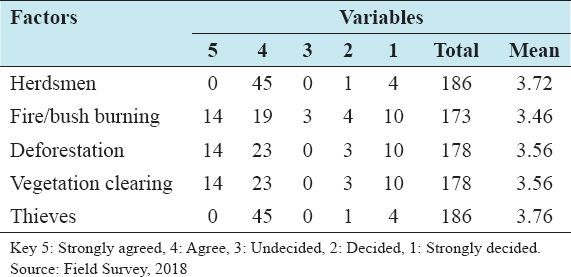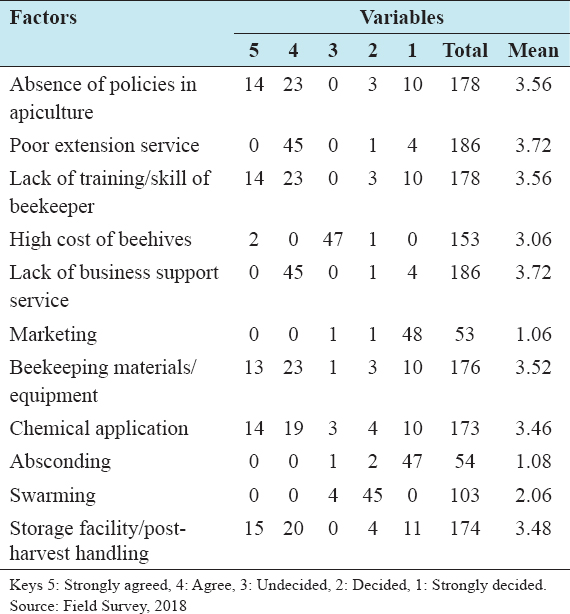Threats to honeybees and beekeeping practices in Mangu Local Government Area, Plateau state, Nigeria
T. A. Erhabor1*, C. J. Ukanyirioha1, R. I. Nwosu2, G. O. Baba3, C. K. Yakubu4, Y. D. Sulaiman3
1Department of Forestry Technology, Federal College of Forestry, Jos, Nigeria, 2Department of Computer Science, Forestry, Jos, Nigeria, 3Savanna Forestry Research Station, Samaru, Zaria, Nigeria, 4Department of Horticulture and Landscaping Technology, Federal College of Forestry, Jos, Nigeria
ABSTRACT
Honey beekeeping is primarily for the production of honey, a product that has found high importance in nutrition and health. Beyond this importance and production of other tangible goods, bees are one of the most essential components of the ecosystem considering their immense contribution to plant pollination and a consequent contribution to high agricultural productivity. Threats to honeybees and beekeeping practices affect the population of bees, ease of keeping the bees, and profitability of honey production. In Mangu Local Government Area, 50 active beekeepers were purposively selected, to identify threats to honeybees and beekeeping practices using a semi-structured questionnaire. To ascertain the extent of perception of the threats, a 5-point Likert scale was used. Threats from anthropogenic activities were highest in the study area with mean scores ranging from 3.72 to 3.46. Biological threats from ants (3.72), honey badger termites (3.56), birds (3.52), beetles (3.48), and lizards (3.46) as well as threats from management and government policies – poor extension services (3.72), lack of business support services (3.72), absence of policies on beekeeping (3.56), inadequate beekeeping skills (3.56), crude beekeeping materials (3.52), poor storage facilities (3.48), and use of chemicals (3.46) – were high in the study area. Environmental/climatic conditions were not considered as major threats to beekeeping practice in the study area. Despite all the threats facing the beekeeping subsector, there are still enormous opportunities and potentials to boost the production and quality of honey production in the district.
Keywords: Anthropogenic activities, biological threats, deforestation, extension services, pollination





